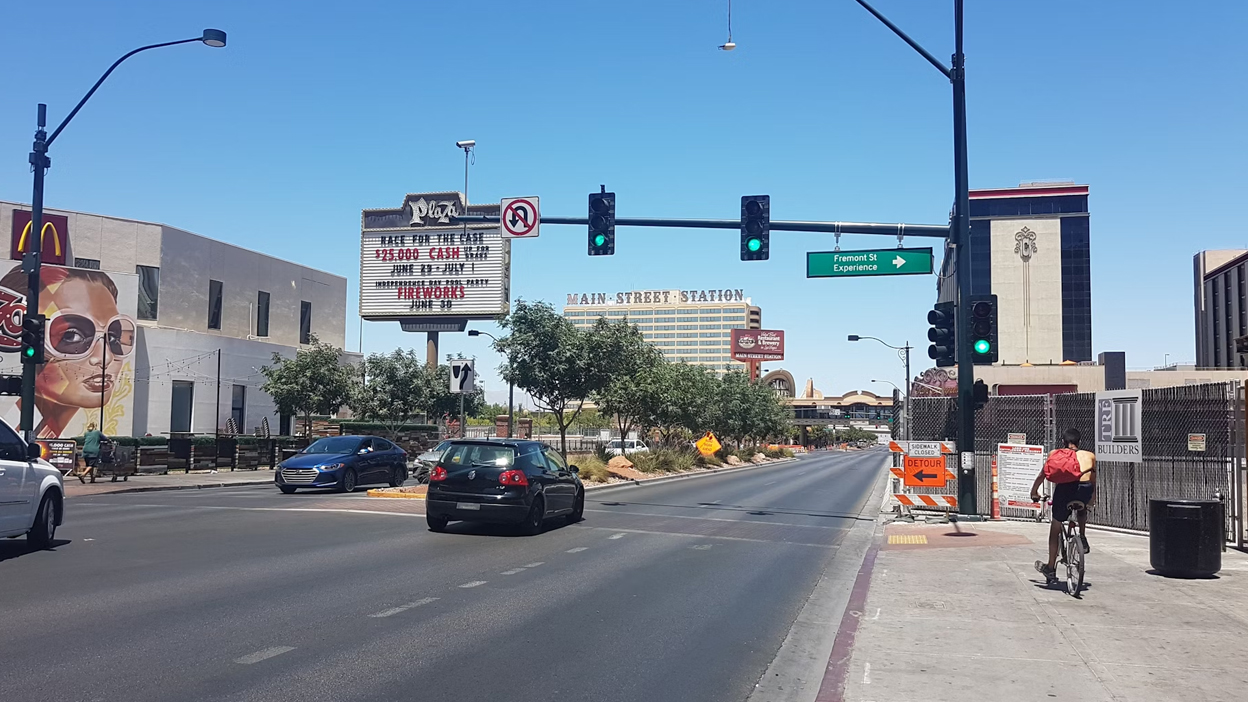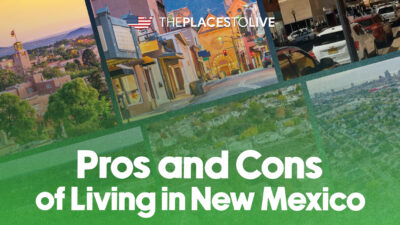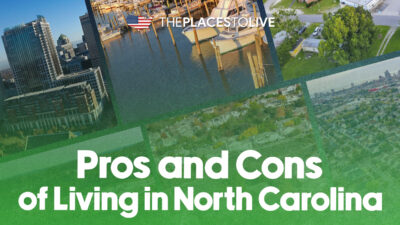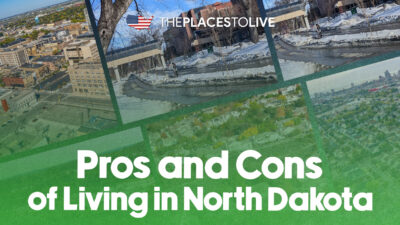Pros and Cons of Living in Nevada: A Comprehensive Review for 2025 Movers and Residents
Moving to a new state is a big decision. Evaluating the pros and cons of living in Nevada is essential for anyone considering relocation or weighing whether to stay in this unique state. Nevada has a distinctive lifestyle shaped by its desert environment, vibrant cities, and economic factors that influence residents’ quality of life. Understanding the Nevada pros and cons thoroughly helps with making informed choices about finances, lifestyle preferences, and long-term comfort.
This article offers a detailed and balanced review of both the living in Nevada benefits and Nevada lifestyle drawbacks based on 2025 data. It explores housing costs, climate considerations, employment opportunities, community aspects, and urban versus rural living differences. Whether you are a family, retiree, or working professional, this guide aims to clarify how Nevada’s opportunities and challenges shape the overall Nevada quality of life.
Overview of Nevada Lifestyle and Quality of Life in 2025

Nevada’s lifestyle is unlike many states in the U.S. At its core, it’s an arid desert region featuring sprawling deserts, rugged mountains, and signature urban centers like Las Vegas and Reno. These cities fuel Nevada’s economy with tourism, gaming, hospitality, and a growing technology industry.
When discussing Nevada quality of life, it is crucial to consider several factors:
- Economic Affordability: Housing and taxes that affect personal finances.
- Outdoor Activities: Access to hiking, boating, national parks, and desert exploration.
- Cultural Diversity and Community: Vibrant urban populations mixed with smaller, quieter rural towns.
- Environmental Conditions: Desert climate with hot summers and mild winters.
The state’s geography creates stark contrasts between bustling urban hubs offering entertainment and jobs and peaceful rural areas with fewer amenities. Residents can enjoy proximity to stunning landscapes like Red Rock Canyon and Lake Tahoe. Outdoor recreation is accessible year-round, contributing positively to Nevada’s lifestyle appeal.
However, differences emerge between urban and rural living experiences due to service availability and community infrastructure. These urban-rural disparities shape how one experiences living in Nevada benefits or struggles with Nevada lifestyle drawbacks.
Pros of Living in Nevada
Affordable Housing and Cost of Living
One of the most notable living in Nevada benefits is affordable housing compared to other West Coast states. In 2025, the median home price in Las Vegas is approximately $420,000. Monthly rents typically range from $1,200 to $1,700, which is more reasonable than housing markets in California or coastal metropolitan areas.
The property tax rate is low, about 0.59%. Nevada’s overall cost of living index stands near the national average at 101.3, meaning daily expenses like groceries and utilities are manageable for many households.
This financial environment attracts budget-conscious individuals and families seeking lower housing costs without sacrificing access to urban conveniences. For detailed affordable places to live in Nevada, see affordable places to live in Nevada.
No State Income Tax
Nevada offers a significant financial advantage through its no state income tax policy. Residents keep more of their earnings, increasing disposable income and savings potential. This tax benefit can notably improve financial well-being, especially for middle- and upper-income earners.
By avoiding state income taxes, Nevada provides an incentive for retirees, remote workers, and entrepreneurs looking to maximize after-tax income.
Outdoor Lifestyle and Recreation
Nevada’s climate and geography support an active outdoor lifestyle year-round. Its deserts, lakes such as Lake Mead, and mountain regions offer countless recreational options including hiking, boating, fishing, and camping.
The availability of nearby national parks and protected areas enriches residents’ connection to nature and supports wellness through regular outdoor activities.
This outdoor-oriented living is a key Nevada quality of life perk for those who prioritize health, fitness, and exploration. For recommended mountain towns and outdoor communities, see mountain towns in the West.
Growing Job Market with Diverse Opportunities
Nevada’s economy remains anchored in tourism, gaming, and hospitality, industries centered mostly in Las Vegas and Reno. However, an emerging tech sector is expanding, offering increasing numbers of positions in technology, software development, and innovation fields.
This diversification creates a broader job market for residents and newcomers, helping to sustain employment in various economic segments.
Mild Winter Weather
For individuals averse to harsh winters, Nevada’s generally mild winters with minimal snow are appealing. This climate makes it easier to enjoy outdoor life year-round and reduces winter-related costs such as heating and snow removal.
Mild winters are a contributing factor to several living in Nevada benefits related to comfort and lower seasonal expenses.
Recommended Home Security Systems
Given Nevada’s mix of suburban and rural living, securing your home is vital. Investing in smart home security systems like Ring or SimpliSafe provides peace of mind and effective monitoring. These systems offer wireless installation, remote app control, and alerts, making them practical choices to protect properties in diverse Nevada neighborhoods. To explore safe areas in Nevada for your home, see safest places to live in Nevada.
Cons of Living in Nevada

Extreme Summer Heat
One of the most significant Nevada lifestyle drawbacks is the intense summer heat. Temperatures frequently climb above 100°F in cities like Las Vegas. Such extreme heat poses health risks, especially for children, the elderly, and those with respiratory issues.
Additionally, cooling homes during these months requires substantial energy use, increasing electricity bills considerably.
Water Scarcity and Sustainability Concerns
Nevada’s desert climate brings ongoing water scarcity challenges. Persistent drought conditions and limited freshwater supplies affect landscaping choices and restrict water use.
Sustainable living requires careful water management. This scarcity is a serious factor influencing the long-term viability of living comfortably and supporting Nevada’s outdoor lifestyle.
Limited Public Transportation Outside Urban Centers
While major cities like Las Vegas and Reno offer some public transportation options, most of Nevada’s rural areas lack reliable transit systems. Car ownership becomes essential for commuting to work, shopping, and accessing services.
This transport limitation can inconvenience residents, raise commuting costs, and reduce mobility for those without private vehicles. For more about walkable urban areas and car-free living in Nevada, see walkable cities in Nevada.
Social and Entertainment Venues Are Concentrated
Nevada’s vibrant social scenes, cultural events, and entertainment venues are heavily concentrated around cities such as Las Vegas and Reno. Rural communities offer fewer choices for activities or nightlife.
Residents seeking diverse social engagement or cultural experiences may find limited options depending on their location, potentially leading to feelings of isolation.
Crime Rates in Some Urban Neighborhoods
Certain neighborhoods in Nevada’s larger cities face higher-than-average crime rates. While crime is not uniform across the state, safety concerns in some urban areas may influence residential decisions.
Remaining informed about local crime patterns and investing in home security are important considerations to maintain personal safety. For detailed safe neighborhoods and low-crime places in Nevada, see safe places in Nevada.
Recommended Cooling and Water-Saving Devices
To mitigate these Nevada lifestyle drawbacks, residents can invest in efficient air conditioning units from trusted brands such as LG or Carrier to manage extreme heat effectively.
Additionally, incorporating water-saving devices like the WaterBoss system can reduce household water consumption, helping address scarcity and promote sustainability.
Comparing Nevada Pros and Cons

Examining the Nevada pros and cons reveals a nuanced picture shaped by personal priorities and circumstances.
Who Benefits Most?
The state’s financial advantages—tax savings, affordable housing, and cost of living—appeal strongly to retirees, remote workers, and budget-minded movers seeking economic relief. For remote work-friendly cities in Nevada, see remote worker cities in Nevada.
Outdoor enthusiasts greatly value Nevada’s access to parks, trails, and mild winters, creating a desirable lifestyle balance.
Challenges for Some Residents
Conversely, individuals sensitive to heat or those reliant on public transit may find the Nevada lifestyle drawbacks more prominent. Water scarcity presents an ongoing environmental concern that cannot be overlooked.
Urban vs Rural Living Dynamics
Urban residents enjoy proximity to jobs, entertainment, healthcare, and some public transit, but contend with higher housing costs and crime concerns in certain areas.
Rural residents benefit from lower property prices and quieter surroundings, offset by limited services, long commutes, and fewer social opportunities. For exploring small towns and rural communities in Nevada, visit small towns in Nevada and rural towns in Nevada.
Ultimately, the trade-offs between these factors determine the best fit for potential residents.
Nevada Quality of Life: How It Measures Up in 2025
An overall assessment of Nevada quality of life includes several measurable indicators:
Education
Nevada’s education system generally ranks slightly below national averages. Families should consider school quality carefully when choosing locations, especially in rural regions where options may be limited. Find family-friendly neighborhoods and places to raise a family in Nevada at best places to raise a family in Nevada.
Healthcare
Health insurance premiums in Nevada tend to be somewhat more affordable than the U.S. average. However, access to medical services can vary between urban and rural areas, with some rural residents experiencing longer travel times for specialized care.
Commute Times
Longer commutes are typical in non-urban settings due to sparse public transportation infrastructure. This factor can affect daily quality of life for many residents.
Community Engagement and Diversity
Nevada prides itself on cultural diversity and moderate levels of social participation. Cities are melting pots of various cultures, enhancing community vibrancy. For immigrant-friendly cities and diverse communities in Nevada, see immigrant-friendly cities in Nevada.
Demographics and Economic Outlook
Nevada’s population continues to grow and diversify. Median household income is projected to reach about $70,000 in 2025, reflecting economic expansion.
Nevertheless, rising housing costs and inflation pose challenges. The state’s growing tech and tourism industries offer promising opportunities, potentially improving economic stability.
FAQs
Is Nevada a good place to live for families?
It depends on the location. Suburbs around Las Vegas and Reno generally provide family-friendly schools, parks, and amenities. Rural areas offer a quieter lifestyle but fewer services. The lack of state income tax and relatively affordable housing make Nevada financially appealing for families.
What are the biggest challenges of living in Nevada?
The main challenges include extreme summer heat, ongoing water scarcity, limited public transportation in many areas, and localized crime concerns in some urban neighborhoods.
How expensive is living in Nevada compared to other states?
Overall, Nevada’s cost of living is close to the national average. Housing and property taxes are more affordable than in California or many East Coast states, but transportation and utility costs can be higher in certain regions.
What are the best cities or towns to live in Nevada?
Top urban centers include Las Vegas, Reno, Henderson, and Sparks due to their employment opportunities and amenities. Smaller towns offer a peaceful lifestyle with fewer services but lower costs.
Where can I find resources for moving to Nevada?
For housing, platforms like Zillow and Realtor.com specializing in Nevada listings offer comprehensive options. Relocation guides from Nevada’s official tourism or state websites provide practical tips and contacts to ease your transition. Also, see things to know before moving to Nevada for essential moving tips.
Conclusion:
In summary, the pros and cons of living in Nevada highlight a state rich in opportunity but with notable challenges. The absence of state income tax, affordable housing, abundant outdoor activities, and mild winters present strong living in Nevada benefits. However, extreme summer heat, water scarcity issues, limited public transit, and crime in some city areas are important Nevada lifestyle drawbacks to weigh carefully.
Ultimately, whether Nevada’s lifestyle suits you depends on individual needs—financial goals, tolerance for climate, and desired access to services and amenities.
If you’re considering a move, explore Nevada real estate options and consider investing in practical home products like security systems (Ring, SimpliSafe), efficient air conditioners (LG, Carrier), and water-saving devices (WaterBoss) to enhance your comfort and safety.
Nevada offers a unique blend of environment, economy, and community that can deliver a rewarding living experience when matched with your priorities. Use these insights into the Nevada pros and cons and Nevada quality of life to make a confident decision for 2025 and beyond.





